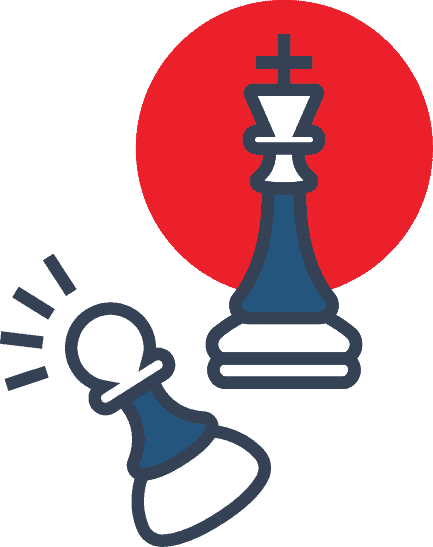If you think your marketing campaigns are hitting the mark, think again. Only one in three consumers believe their favorite brands truly understand them, according to a recent study by IBM and Econsultancy.
The study found consumers are less than impressed with the relevance of the content they receive. Only 35% of respondents said their favorite companies sent ‘usually relevant’ emails or messages.
This is troubling but there’s hope. Harnessing the power of emotional intelligence (or EI as it’s often referred to) can help.
What is EI?
EI refers to our ability to understand moods, behaviors and impulses, and control them to match a particular situation. It helps you to target your customers in the right place, at the right time, and get to know them on a deeper level.
To establish a meaningful relationship you must first understand the emotion of your customers at the time they desire your product. To do this, think about your buyer’s experience with your product before she reaches out to you:
- What are the triggers that cause her to start looking for you?
- What emotional factors influence her need to have your product?
- What pleasure will she receive from using your product?
- How will your product solve her problems?
Once you have an idea of the journey your buyer is on, you can then build out your buyer persona. One core aspect of the buyer persona you’ll create – understanding your customer’s emotional triggers.
Social listening tools such as Topsy, Hootsuite and Social Mention give insight to what your audience is passionate about. With these insights, you have a solid starting ground to formulate your digital marketing strategy.
Using EI to Build Your Digital Marketing Strategy
Becoming more intelligent about your buyer’s emotions enables you to:
- Drive traffic to your website with the help of semantic search
- Increase conversions by making the content more relatable
- Make your marketing automation stronger
Let’s look at each of these in more detail.
1. Drive Traffic to Your Website
Once you have understood the emotions that drive your customers, you need to work out how to get your brand in front of them at the right time. Semantic search can help.
“Search engines understand identifying keywords alone is not enough”, writes Sergio Redondo. “Instead they need to understand how the data is related.”
Semantic search helps to improve your buyers search accuracy by understanding their intent and the context that surrounds their search.
To ensure the search engines pick up your content during a search you must build your customer’s emotions into your content. While crafting the copy for your sales pages and content for your blog posts, consider this:
- What will make your visitor click further?
- What will make her share something?
- What will ultimately make her hit the buy button from you (or contact, or whatever your call to action might be)?
You also need to think about the form your content takes and how it can influence emotion. For example, visual content plays a tremendous role in conversions. As the expression goes, a picture speaks a thousand words.
2. Increase Conversions – Make Your Content More Relatable
It goes without saying but we’ll say it anyway. Once you have your buyer’s emotions on hand, you’re ready for the next step. Now, you can use psychology to inspire your buyers to buy.
Psychology uses EI to tap into your buyer’s inner thoughts. By doing so, you’re better equipped to increase conversions because you are adding value to the buyers’ journey, rather than barging in, interrupting and then hijacking the conversation.
Think about how you can add value. Find a way to enhance and improve the lives of your customers with helpful content. Let them get to know you first by becoming an expert storyteller.
This also requires an equal dose of respect for your audience when engaging in retargeting. The frequency of your communications is important. Too little connection and your audience might forget about you. Too much and you could become an annoyance. Be respectful and understand less is sometimes more.
Measuring the success of your campaigns shows you what content prompted the biggest emotional reaction. More than 30% of marketing executives use analytics to alter, extend or repeat a marketing campaign, according to a piece of research by Forbes Insights and Turn.
By experimenting with a mix of different ‘emotional’ content such as infographics, videos, imagery and articles you can gather data to help you become emotionally smarter when it comes to your buyers. Social media and Google Analytics can be used to identify which pieces of content were clicked or shared the most and provided the most conversions.
3. Use EI to Strengthen Your Marketing Automation
Marketing automation is all about nurturing prospects with highly personalized, useful content that helps convert prospects to delighted customers. Done well, marketing automation will generate significant revenue and boost your ROI.
So how does this fit in with EI? With the help of emotional intelligence you will be able to strengthen your marketing automation so that you no longer sound like a robot. You can tailor your content and messaging to speak to specific lead segments at the right time in the buyer’s lifecycle stage. Creating a more personalized experience for them. In turn, this will help you close more deals, generate more revenue and delight your customers.
Your segments should be used to:
- Define the topics and tone of the emails you send
- Plan your content strategy
- Hone the messaging that appears on your website
There are a number of tools you can use to automate your marketing faster, such as Infusionsoft, Buffer, Zapier, Mailchimp and StealthSeminar. Over time the data collected from these tools will help you to divide your database into more targeted segments, delivering more relevant content and offers to your leads.
Takeaways
To get to know your customer you need to understand what drives her emotionally to purchase your product or service. Segment your customers effectively. Understand which buyer personas are most likely to buy from you and what emotions encourage them to purchase. Discover your buyer’s journey by outlining the buying experience.
Hone in on your own emotions by putting yourself in your customer’s shoes. By connecting with your customers emotionally, you will be able to drive traffic to your website, increase your conversion rate and strengthen your marketing automation.


























